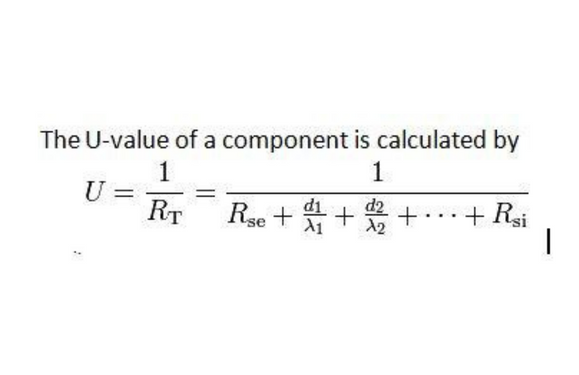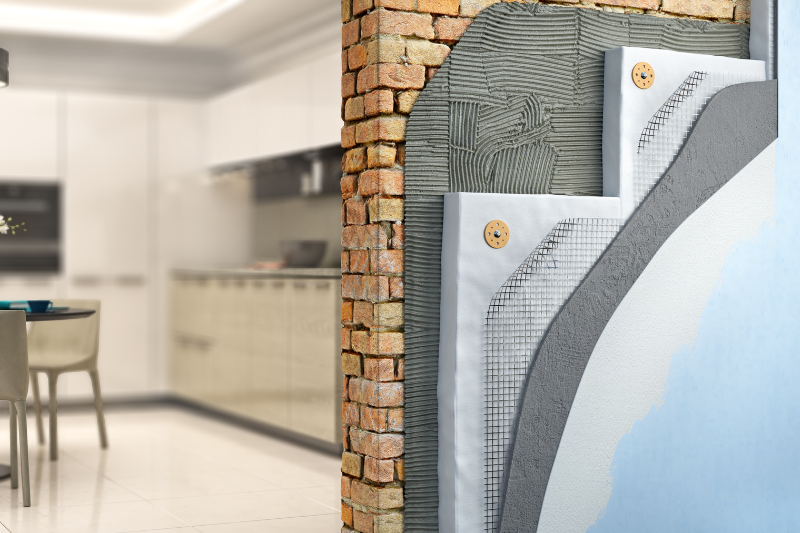What is U Value?
“U Value” is a vital term when considering the thermal efficiency of your home or commercial building. The current situation here in the UK has generated a consistent concern surrounding how we retain and lose heat in our properties. U Value is the unit of measurement used to assess heat transmittance through materials, including walls, floors, ceilings, and each pane of glass. Regarding U Value, the lower the number, the better. This article will explain why that is.
What is U Value?
U Value is the method used to determine the thermal efficiency of a structure by assessing the insulating properties of different building materials. U Value is tested in the building materials used to construct walls, floors, ceilings, and opening additions to your structure, such as doors and windows.
How is U Value measured?
The U Value is measured in units of W/m2.K (Watts per metre-squared Kelvin) and is calculated using a complicated universal formula.

This formula is a lot to unpack. So, we’re going to define each step individually. The R refers to the thermal resistivity of your material. Rse is the external heat transfer resistance, d1 is the thickness of the material, and λ1 is the specific thermal conductivity of the layer of the material. The more layers you have, the more λ and ds you will have. Rsi is the internal transfer heat resistance.
From this, you can calculate the U Values of materials and the insulation U Values. This process can be difficult and time-consuming, especially with so many symbols to keep track of. But you can commission an insulation manufacturer to perform a calculation on your building or use an online calculator. The only problem with a U Value calculator is that you may receive an inaccurate evaluation of the U Values of materials.
Heat Flux Meters
An insulation manufacturer will likely use a heat flux meter to accurately calculate the U values of materials in your building. The heat flux meter will use a thermopile sensor to monitor the heat flow from inside your structure to outside. The U Value is derived by dividing the average heat flux by the average temperature between the internal and external space over two weeks to a year.
What can affect a reading?
Heat flux meters can be interfered with if the weather is hot rather than mild and cloudy. Additionally, if the reader struggles to adhere to the wall or is removed too early, the reading will be inaccurate. Leaving the meter in one place for too long can result in an incorrect result too as more test points will enable greater accuracy and mitigate against anomalies.
Why may a building have a high U Value?
Regarding U Value, the lower the number, the better the result. If you determine that the U Value of your building is too high, the insulation U values of your structure will be too low. U values can return high if the workmanship performed on your building is shoddy. For example, if the insulation is fitted poorly and shows gaps and cold bridges.
When estimating the U Value of your building, the heat loss due to conduction, convection, and radiation are all taken into account, questionable workmanship is not.

How do I increase the insulation U Values of my building?
The best way to increase the U Value of materials in your building is to purchase high-quality products made of excellent materials. Customers expect faults of some degree when purchasing an item or investing in an expensive product for their building. So poor thermal insulation is to be expected from lower-quality items.
However, here at Lonsdale, we ensure to exceed expectations, and offer products to exceed your expectations and meet the requirements for efficient insulation.
What is the ideal U Value?
All construction materials that can act as insulators must adhere to the LABC Guidelines. The Local Authority Building Control is a national organisation that ensures building work complies with building regulations. In this case, according to the LABC guidelines, a wall should aim to have a U Value of 0.3 W/m2k, a roof: 0.18 W/m2k, and a floor: 0.25 W/m2k. For windows, a “good” U Value is considered between 0.17W/m2k and 0.39W/m2k.
The best insulating materials have a U Value of nearly zero, but there is no true cause for concern until the U Values of materials reach above 1. The exception to this rule, however, is rooflights.
U Values in Rooflights
Rooflights can have a U Value of up to 2.2 W/m²K, but here at Lonsdale we have crunched the numbers and can now produce rooflights with U values of just 1W/m²K for double-glazing and 0.60W/m²K for triple glazing.
Our rooflights are some of the most thermally efficient on the market, and they are aesthetically pleasing. Additionally, if you don’t find what you’re looking for with our rooflights but still want the insulation U Values, we manufacture bespoke rooflights to meet your every need.
Lonsdale
Now that you know the meaning of U Values, how to determine them, and the general jargon surrounding them, you can make an informed decision and choose Lonsdale for your rooflight solution. Contact us now to discuss your options with us!


